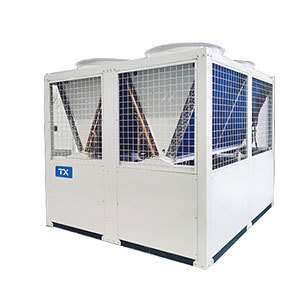Understanding Air Cooled Water Chillers: A Guide to Efficient Cooling Solutions

Air cooled water chillers are vital components in various industrial applications, providing efficient cooling solutions without the need for extensive water supply systems. Unlike water-cooled chillers, which require a cooling tower and water source, air cooled chillers utilize ambient air to dissipate heat. This feature makes them particularly advantageous in environments where water availability is limited or where water conservation is a priority.
The operation of an air cooled water chiller is relatively straightforward. It consists of a refrigerant system that circulates refrigerant through a series of evaporators and condensers. The process begins when warm water is pumped into the evaporator, where it absorbs heat from the refrigerant, causing the refrigerant to evaporate and cool the water. The gaseous refrigerant is then compressed in the compressor, which increases its temperature and pressure. Finally, the hot, high-pressure refrigerant passes through the condenser, where it releases heat into the surrounding air, typically using a fan to enhance the heat exchange. This cycle repeats, continuously providing chilled water for various industrial processes.
One of the primary advantages of air cooled water chillers is their lower installation and operational costs. Since they do not require a cooling tower or additional water supply infrastructure, they can be more economical to install and maintain. This reduction in infrastructure can lead to significant savings for businesses, especially in regions where water is scarce or costly.
Moreover, air cooled chillers are generally easier to install and relocate compared to their water-cooled counterparts. Their compact design allows for flexible placement, making them suitable for various applications, from manufacturing facilities to commercial buildings. This versatility is particularly beneficial for industries that require mobility in their cooling solutions.
Another noteworthy benefit is the energy efficiency of modern air cooled water chillers. Advances in technology have led to the development of chillers that offer higher efficiency ratings, reducing energy consumption and lowering operational costs. Many models are now equipped with variable speed drives and sophisticated control systems that adjust the chiller’s operation based on real-time cooling demands, further enhancing efficiency.
In conclusion, air cooled water chillers represent an effective and adaptable solution for industrial cooling needs. Their ease of installation, lower operational costs, and advancements in energy efficiency make them a compelling choice for many businesses. Whether you are looking to optimize your production processes or ensure a stable environment for sensitive equipment, understanding the benefits and operation of air cooled water chillers can help you make informed decisions in your cooling strategy.
The operation of an air cooled water chiller is relatively straightforward. It consists of a refrigerant system that circulates refrigerant through a series of evaporators and condensers. The process begins when warm water is pumped into the evaporator, where it absorbs heat from the refrigerant, causing the refrigerant to evaporate and cool the water. The gaseous refrigerant is then compressed in the compressor, which increases its temperature and pressure. Finally, the hot, high-pressure refrigerant passes through the condenser, where it releases heat into the surrounding air, typically using a fan to enhance the heat exchange. This cycle repeats, continuously providing chilled water for various industrial processes.
One of the primary advantages of air cooled water chillers is their lower installation and operational costs. Since they do not require a cooling tower or additional water supply infrastructure, they can be more economical to install and maintain. This reduction in infrastructure can lead to significant savings for businesses, especially in regions where water is scarce or costly.
Moreover, air cooled chillers are generally easier to install and relocate compared to their water-cooled counterparts. Their compact design allows for flexible placement, making them suitable for various applications, from manufacturing facilities to commercial buildings. This versatility is particularly beneficial for industries that require mobility in their cooling solutions.
Another noteworthy benefit is the energy efficiency of modern air cooled water chillers. Advances in technology have led to the development of chillers that offer higher efficiency ratings, reducing energy consumption and lowering operational costs. Many models are now equipped with variable speed drives and sophisticated control systems that adjust the chiller’s operation based on real-time cooling demands, further enhancing efficiency.
In conclusion, air cooled water chillers represent an effective and adaptable solution for industrial cooling needs. Their ease of installation, lower operational costs, and advancements in energy efficiency make them a compelling choice for many businesses. Whether you are looking to optimize your production processes or ensure a stable environment for sensitive equipment, understanding the benefits and operation of air cooled water chillers can help you make informed decisions in your cooling strategy.
PREVIOUS:

